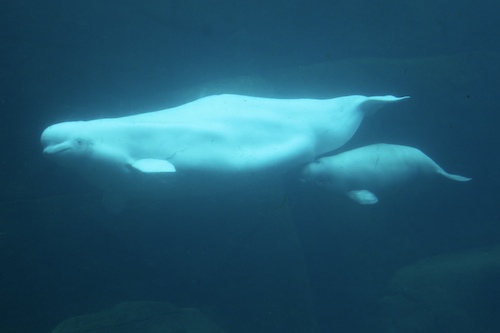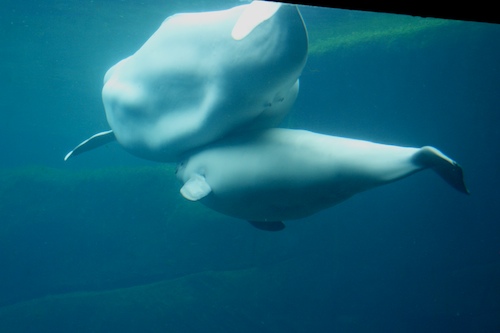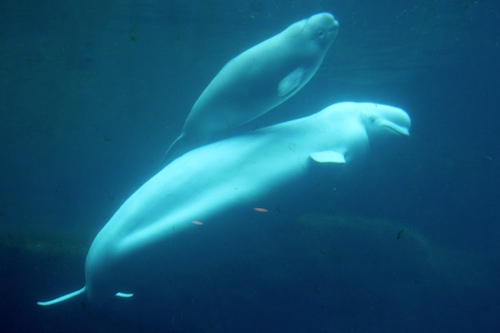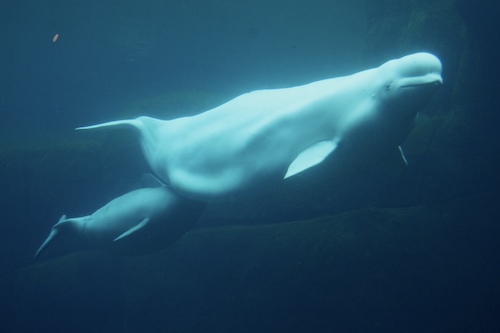How Do Whales Nurse? Let’s Find Out!
Retired
Kera
Thursday, August 20, 2009
The past few weeks, we’ve been seeing a decent number of cow/calf pairs of blue whales. Just recently I got word that a calf was seen nursing! Now even though I haven’t witnessed this with blue whales myself, I did recently get to see beluga whales nursing!
Recently I took my vacation and went to the San Juan Islands, and then to the Vancouver Aquarium in B.C., Canada. It was absolutely amazing to see their little newborn beluga. While we were at the underwater window, both of the calves, one being about a year old, and the other just about 3 months old, started nursing. I couldn’t believe my luck and of course took some pictures!
Depending on the species of whale, some young can stay nursing for up to two years! The milk of the mother is a very high concentration of fat to help ensure that the baby is able to get a really thick layer of blubber, which is like fat, that helps with the insulation. Because whales and dolphins are mammals, they need to make sure they can stay warm at all times living in the cold water. Humans, for example, wouldn’t be able to stay in water for long periods of time, even with a wetsuit. We don’t have a thick fat layer to keep the heat inside our bodies and that becomes a problem because water drains the heat out of our body about 25 times faster than air! See why blubber is so important?
Since it’s so important the calves gain weight quickly from milk, how does a whale nurse underwater? It seems like a pretty tough obstacle to overcome! Typically what happens is the baby starts to nudge the mama around the belly. That lets the mother know that the baby is ready to feed. To be more hydrodynamic, the mother’s nipples are inverted at the mammary gland until the baby starts to nudge where they then start to point out. The mom then starts to shoot out milk. Whales don’t have lips, so they can’t really suckle the milk. Instead it’s almost injected into the baby’s mouth. This will go on until the baby is weaned from nursing. The older of the two baby beluga is still nursing, but is also getting solid food as well. It just goes to show what a close bond these babies have with their mother! As the baby starts to eat solid food, the concentration of fat in the milk starts to decrease. It’s amazing how these animals are adapted for these kind of behaviors!
I feel incredibly lucky to have witnessed this amazing maternal bond with the beluga whales, and with any luck, I’ll soon get the chance to see a blue whale nursing as well. If you’d like to join me and my co-workers on our search, click here!





